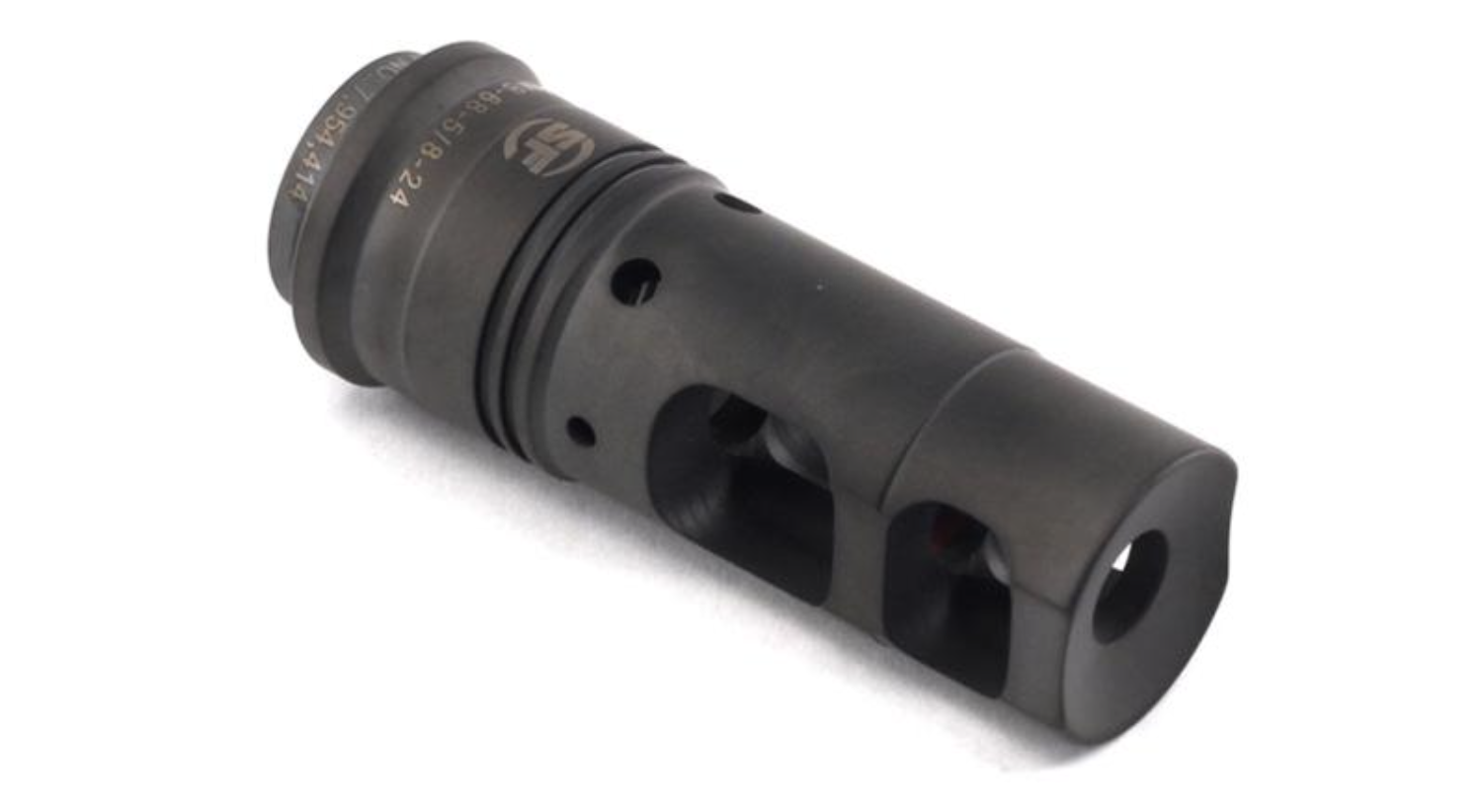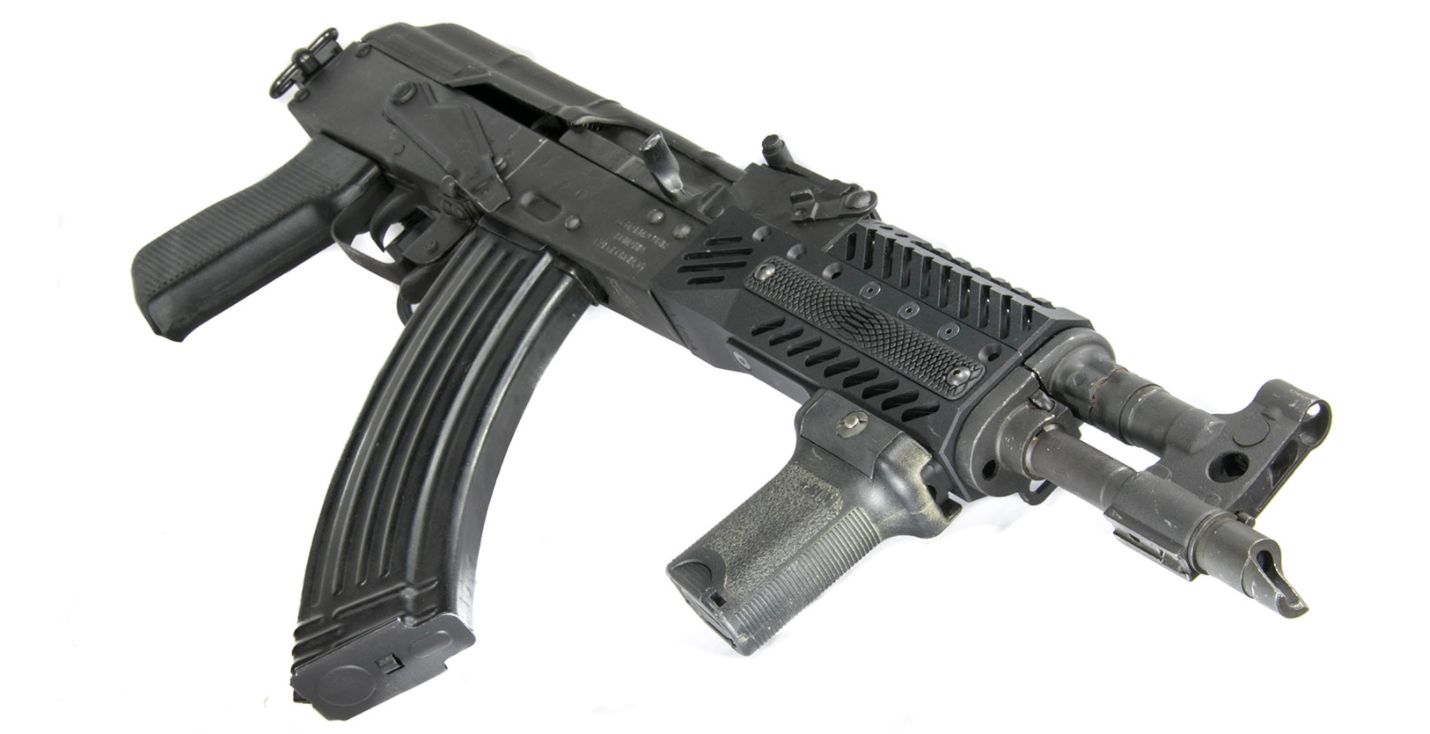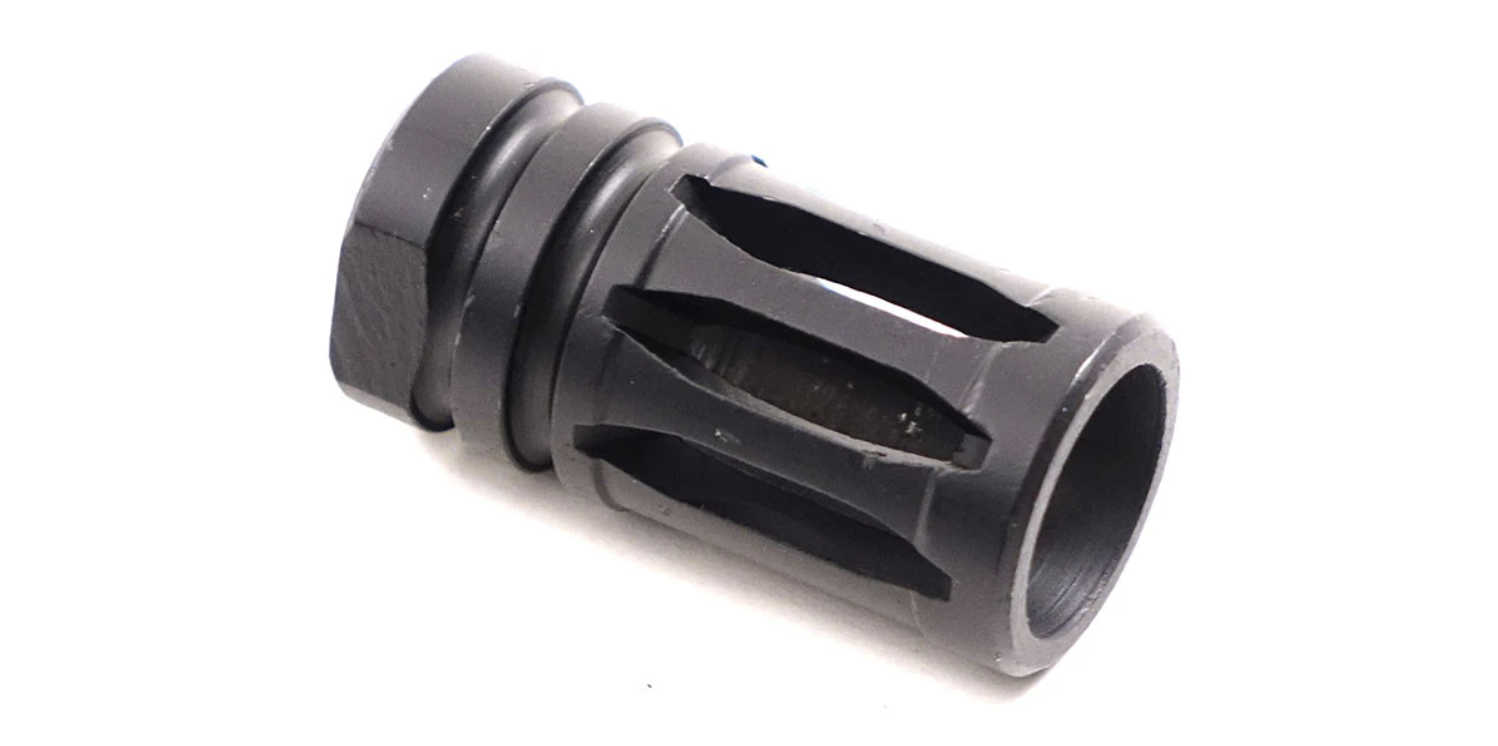Posted by Modulus Arms on 24th Aug 2021
Muzzle Brakes, Compensators, and Flash-hiders: Which Is Best For My Rifle?
Our firearms are tools: Not all are created equal, not every-one is suited to every task, and sometimes you need a specific tool for a specific job. Much like the tools in our garage, our guns need to be set up properly to be used effectively. One of the most important features of modern rifles are the chunks of machined metal threaded or permanently milled onto the end of the barrel known as ‘muzzle devices’. These most commonly come in the form of a muzzle break, a flash-hider, or a compensator.
Despite the shared job of manipulating the gasses expelled from the rifle, the muzzle device you choose can drastically affect both the performance and behavior of your rifle.
So which is the right one to use, and what specifically do they do?
MUZZLE BRAKES:

Most commonly seen on precision bolt guns, the muzzle brake is the best device for long days at the range shooting larger calibers to keep your shoulder from getting too beat up. Everyone develops a flinch at some point, and shooting a large caliber without a brake isn't any fun at all. So, let's find out exactly what a muzzle brake is, and what it does...
What is a Muzzle Brake?
Muzzle brakes are muzzle devices with a primary focus on eliminating ‘felt’ recoil, or in layman's terms: to reduce the overall amount of energy going back into your hand or shoulder. This is done by allowing the gasses to escape in several directions perpendicular to the barrel, as opposed to directly outwards. Additionally, the way in which the holes cut into the device redirects gasses also mitigates the ‘upturn’, or vertical recoil gun has when firing subsequent shots.
When the initial burst of energy from your cartridge going off and the gasses expelling from your barrel forces your rifle up, the holes divert the gasses upwards to apply some downforce to restabilize the rifle. It’s like balancing out a see-saw, but with significantly more explosions. AR-15 muzzle brakes (for example) do this task fairly well to a degree, but not as well as compensators.
So what’s the catch?
Muzzle brakes are *loud*. Your upstairs roommate at 3 AM loud; consequently, much like your roommate/neighbor, they are a detriment to the hearing (and brain-cells) of anyone within a close proximity, even with ear-protection on.
Furthermore, muzzle brakes tend to be on the expensive side, ranging anywhere from 50 to upwards of 200+ dollars.
COMPENSATORS:

So if a muzzle brake’s job is to mitigate felt recoil, what is a compensator and what is its purpose on a rifle?
Although compensators also take away some felt recoil, its primary job is to severely lessen the vertical recoil of a firearm. Going back to our see-saw analogy, a compensator balances out the upward vertical recoil caused by the expulsion of the gasses by redirecting that same gas (funnily enough) upwards, so that it forces the barrel of the rifle down.
A great example of a compensator you’ve probably seen before would be the slanted compensator on the end of AKMs (NOT AK47’s. Yes, there is a difference!): After the initial success of the AK-47, during field use the Russian’s discovered that the rifle had a tendency to kick vertically at an angle when firing due to the weight distribution of the gun’s bolt carrier. So, Mikhail Kalashnikov invented a simple, yet brilliant muzzle device that redirected the gasses in the same direction of the recoil to ‘compensate’ for the movement of the bolt.
Now that’s all well and good, but what are the downsides of using a ‘comp’?
Similarly to muzzle brakes, compensators can be deafening. Not really something you’d use if you’re trying to keep a low profile. They are also just as expensive as muzzle breaks, if not even more so. Moreover, although they can help with felt recoil, it’s not going to spare your shoulder or wrists in the same way a brake would.
FLASH-HIDERS:

If you’ve seen an AR-15, you’ve seen a flash-hider. The AR-15 A2 Flash Hider, for example, has had a long and storied history in the United States Military. Flash-hiders do what they say on the tin: they hide the ‘muzzle flash’ of your rifle when shooting, so whatever you’re shooting at will not have a visual indicator of where you are.
More specifically, flash-hiders/flash suppressors are cut in such a way that it allows the hot gasses from the barrel to mix with cool air just before exiting the barrel, as this sudden combination of cool and hot gasses leaving the barrel is what causes that bright flash in the first place.
Most importantly for night vision-users, flash-hiders won't white out your tubes when shooting, allowing you to see even when putting a lot of rounds down range. Flash-hiders are also generally cheap, especially considering most AR-15s come with one out of the box. Many flash-hiders also act as muzzle breaks, however eliminating felt recoil is only a secondary objective.
The main benefit to using a flash-hider over a compensator or a muzzle break is overall ‘signature’ reduction, or how easy it is to hear and spot the shooter: A flash-hider will not only get rid most of your muzzle flash, but it also will assist in shooting without raising your decibel level, or the amount of noise your rifle is making. This makes the flash hider the most practical choice by all measures.
Muzzle Brake vs. Compensator vs. Flash-Hider
Let’s do a quick recap:
- Muzzle breaks lessen ‘felt’ recoil and helps some with vertical recoil.
- Compensators greatly reduce vertical recoil and help some with felt recoil
- Flash-hiders suppress muzzle flash and do nothing for recoil
Muzzle brakes give your shoulder a break, compensators compensate, and flash-hiders hide flash. Can’t get any simpler than that.
Choosing your muzzle device can be a fairly personal decision, doubly so if it’s for your home defense rifle. The important thing is to choose a comp, brake, or flash-hider that is going to allow you and your rifle to be the most effective in the situation you build it for. If you're going through all of the trouble to build an 80% lower, make sure to build the rest of the rifle right!However, what’s even more important is to get training. All the ‘Gucci gear’ in the world won’t save you from someone else’s superior skills and tactics.

